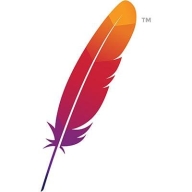

Red Hat AMQ and Apache Kafka are products competing in the messaging and streaming data category. Apache Kafka seems to have the upper hand due to its scalability and robust performance, favored for large-scale data operations.
Features: Red Hat AMQ offers exceptional integration capabilities, seamless management within the Red Hat ecosystem, and reliable support, making it suitable for enterprises using Red Hat's infrastructure. Apache Kafka supports large volumes of real-time data, has an extensive ecosystem of connectors, and provides efficient data handling, which is advantageous for applications demanding high throughput.
Room for Improvement: Red Hat AMQ could enhance its open-source community engagement, increase scalability options, and diversify messaging protocols. Apache Kafka may improve ease of deployment, offer better native support for cloud-based solutions, and enhance user-friendliness for less experienced users.
Ease of Deployment and Customer Service: Red Hat AMQ provides straightforward deployment, especially within the Red Hat ecosystem, and reliable customer support. Apache Kafka, while complex, has robust community resources and extensive documentation that assist in deployment and management.
Pricing and ROI: Red Hat AMQ's initial setup costs can be high due to subscription fees but offer consistent ROI when integrated with Red Hat systems. Apache Kafka's open-source nature reduces upfront costs, with ROI largely dependent on existing internal knowledge and management resources. Its cost-effectiveness benefits businesses that can leverage its architecture.
| Product | Market Share (%) |
|---|---|
| Apache Kafka | 3.7% |
| Apache Flink | 14.8% |
| Databricks | 12.5% |
| Other | 69.0% |
| Product | Market Share (%) |
|---|---|
| Red Hat AMQ | 9.5% |
| IBM MQ | 25.5% |
| ActiveMQ | 25.1% |
| Other | 39.9% |


| Company Size | Count |
|---|---|
| Small Business | 32 |
| Midsize Enterprise | 18 |
| Large Enterprise | 47 |
| Company Size | Count |
|---|---|
| Small Business | 5 |
| Midsize Enterprise | 4 |
| Large Enterprise | 2 |
Apache Kafka is an open-source distributed streaming platform that serves as a central hub for handling real-time data streams. It allows efficient publishing, subscribing, and processing of data from various sources like applications, servers, and sensors.
Kafka's core benefits include high scalability for big data pipelines, fault tolerance ensuring continuous operation despite node failures, low latency for real-time applications, and decoupling of data producers from consumers.
Key features include topics for organizing data streams, producers for publishing data, consumers for subscribing to data, brokers for managing clusters, and connectors for easy integration with various data sources.
Large organizations use Kafka for real-time analytics, log aggregation, fraud detection, IoT data processing, and facilitating communication between microservices.
To respond to business demands quickly and efficiently, you need a way to integrate the applications and data spread across your enterprise. Red Hat JBoss A-MQ—based on the Apache ActiveMQ open source project—is a flexible, high-performance messaging platform that delivers information reliably, enabling real-time integration and connecting the Internet of Things (IoT).
We monitor all Streaming Analytics reviews to prevent fraudulent reviews and keep review quality high. We do not post reviews by company employees or direct competitors. We validate each review for authenticity via cross-reference with LinkedIn, and personal follow-up with the reviewer when necessary.